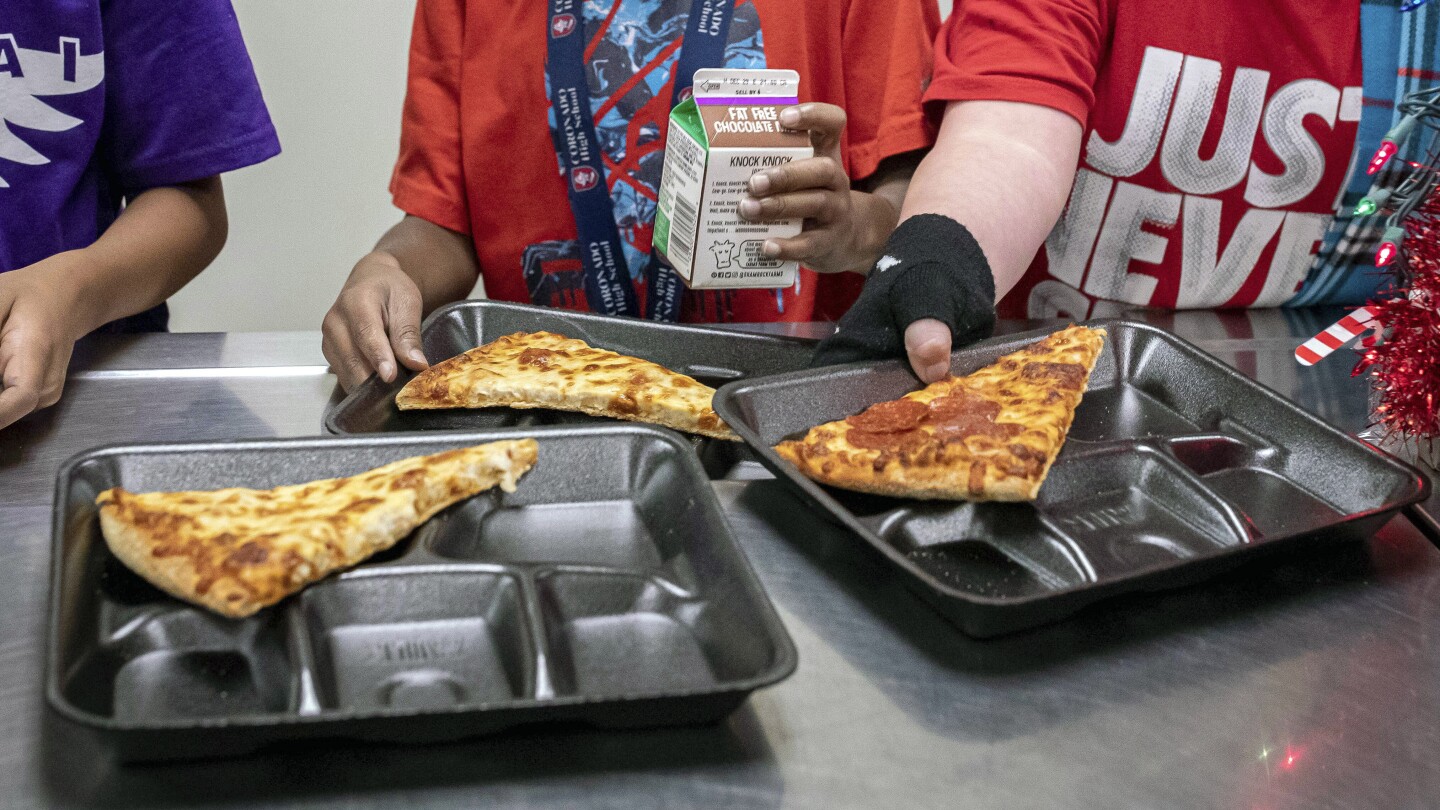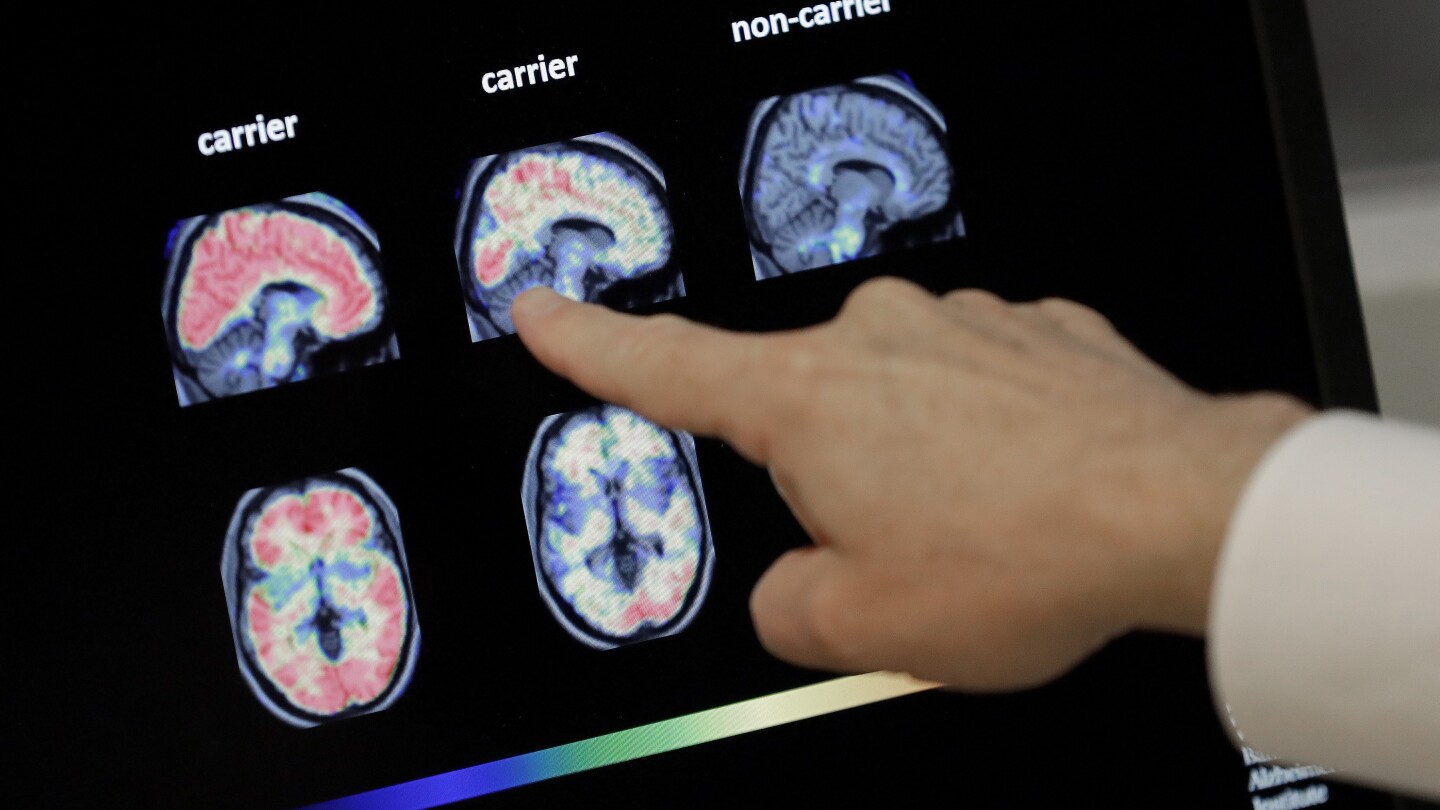Lifestyle
There’s a new push to put whole milk back in school meals. Here’s what you should know

More than a dozen years after higher-fat milk was stripped from school meals to slow obesity in American kids and boost their health, momentum is growing to put it back.
Federal lawmakers have revived bills that would allow whole and 2% milk to be served again in schools, in addition to the skim and low-fat milk mandated since 2012. A U.S. Senate committee hosted a hearing Tuesday on a bill that has bipartisan support.
“Kids need wholesome, nourishing food to grow strong and stay healthy, and whole milk is packed with the nutrients they need,” said Sen. John Fetterman, a Pennsylvania Democrat who is co-sponsoring the legislation.
Health Secretary Robert F. Kennedy Jr. has called the federal dietary guidelines requiring low-fat milk “antiquated” and last month encouraged “full fat/whole milk” to be used in Head Start programs for the nation’s youngest children.
The Obama-era move to require skim and low fat milk in schools was aimed at cutting kids’ consumption of saturated fat and calories, which can increase the risk of heart disease and obesity.
But some nutrition experts, lawmakers and the dairy industry argue that whole milk has been unfairly vilified, and that some studies suggest kids who drink whole milk are less likely to have obesity. Critics also contend that many children don’t like the taste of lower-fat milk and don’t drink it, leading them to miss valuable nutrients.
Here’s what you need to know about the debate over whole milk in school meals:
Why was whole milk removed from school meals?
In 2010, Congress passed the Healthy, Hunger-Free Kids Act, which aimed to reduce childhood obesity and cut health risks for kids. It required school meals to include more whole grains, fruits and vegetables, protein and low-fat dairy and less sugar, sodium and fat.
Starting in 2012, whole and 2% milk was not permitted in school meals because those products are higher in saturated fat and calories than lower-fat options.
Nutrition experts said that skim and low-fat milk gave kids the benefits of necessary nutrients like calcium and Vitamin D with less fat and fewer calories.
How are school meal guidelines set?
The U.S. Agriculture Department sets nutrition guidelines for the national school lunch and breakfast programs, which serve nearly 30 million students each school day.
The nutrition standards are required to meet the federal Dietary Guidelines for Americans, which are reviewed and revised every five years. Since 1985, those guidelines have recommended that Americans older than age 2 consume low-fat or fat-free dairy.
The 2025-2030 dietary guidelines are set for revision this year under a joint effort by USDA and the Department of Health and Human Services. A panel of scientific experts who reviewed evidence regarding milk fat content recommended that the U.S. policy remain the same.
One reason was that research has shown changes in the federal nutrition program after the 2010 law have slowed the rise in obesity among U.S. kids — even teenagers, said Deanna Hoelscher, a nutrition expert and researcher at the University of Texas Health Science Center who served on the dietary guidelines committee.
“We didn’t find enough definitive evidence to change a policy that’s been in place that has shown good outcomes to date,” Hoelscher said.
Although there was limited evidence that consuming higher-fat dairy rather than lower-fat dairy could benefit very young children, there wasn’t enough evidence to make a conclusion for older kids and teens, she said. There were “substantial concerns” with the consistency, quantity and risk of bias in the existing research, the report concluded.
What’s behind
the push for whole milk in schools?
Some nutrition experts point to recent research suggesting that kids who drink whole milk could be less likely to be overweight or develop obesity than children who drink lower-fat milk. One 2020 review of 28 studies suggested that the risk was 40% less for kids who drank whole milk rather than reduced-fat milk, although the study authors noted that the research couldn’t say whether milk consumption was the reason.
One top nutrition expert, Dr. Dariush Mozaffarian of Tufts University, noted that the dietary guidelines panel found “no evidence that whole fat dairy is worse than low-fat dairy,” but they retained the recommendations, citing the need for more research.
“Saturated fat in dairy has not been linked to any adverse health outcomes,” Mozaffarian said.
The pending bills in Congress stipulate that milk fat would not be considered as part of the saturated fat limits required in school meals. That’s because the saturated fatty acids in dairy have a different composition than beef fat, Mozaffarian said, adding that dairy has other beneficial compounds that could offset theoretical harms.
In addition, Mozaffarian noted current USDA guidelines ban whole milk but allow skim and low-fat chocolate and other flavored milk sweetened with added sugars. Last year, the USDA agreed to limit added sugars in school foods for the first time.
Dairy industry advocates say participation in school meals programs and consumption of milk have declined since whole milk was removed.
What’s next?
The USDA and HHS must issue the new dietary guidelines this year. Kennedy and Agriculture Secretary Brooke Rollins have said they are conducting “a line-by-line review” of the scientific report issued under the previous administration — but whether that means a new acceptance of whole milk remains unclear.
Versions of the “Whole Milk for Healthy Kids Act” are pending in both chambers of Congress.
___
The Associated Press Health and Science Department receives support from the Howard Hughes Medical Institute’s Science and Educational Media Group and the Robert Wood Johnson Foundation. The AP is solely responsible for all content.
Lifestyle
Ralph Fiennes will make his opera directing debut

Actor Ralph Fiennes will make his opera directing debut in Paris next season with Tchaikovsky’s “Eugene Onegin.”
The Paris Opera said Wednesday the production will run from Jan. 26 to Feb. 27 at the Palais Garnier and will star Boris Pinkhasovich in the title role, Ruzan Mantashyan as Tatiana, Bogdan Volkov as Lensky and Susan Graham as Madame Larina.
Fiennes, 62, has been nominated for three Academy Awards — most recently, this year, for “Conclave” — and one Emmy Award. The British actor won a Tony Award in 1995 for Shakespeare’s “Hamlet.” Fiennes starred in the title role of the 1999 movie “Onegin,” based on the same Alexander Pushkin novel as the opera. The film was directed by his sister Martha Fiennes.
Semyon Bychkov will conduct most of the performances. Michael Levine designs the sets and Annemarie Woods the costumes.
The Paris Opera 2025-26 season will have new productions of Verdi’s “Aida,” Wagner’s “Die Walküre and ”Siegfried” and Antonia Bembo’s “Ercole amante.”
Revivals include Claus Guth’s staging of Puccini’s “La Bohème,” moved to a spaceship and planet surface and John Adams’ “Nixon in China” with Renée Fleming and Thomas Hampson.
Lifestyle
Shingles is awful, but there may be another reason to get vaccinated. It may fight dementia

WASHINGTON (AP) — A vaccine to fight dementia? It turns out there may already be one – shots that prevent painful shingles also appear to protect aging brains.
A new study found shingles vaccination cut older adults’ risk of developing dementia over the next seven years by 20%.
The research, published Wednesday in the journal Nature, is part of growing understanding about how many factors influence brain health as we age – and what we can do about it.
“It’s a very robust finding,” said lead researcher Dr. Pascal Geldsetzer of Stanford University. And “women seem to benefit more,” important as they’re at higher risk of dementia.
The study tracked people in Wales who were around 80 when receiving the world’s first-generation shingles vaccine over a decade ago. Now, Americans 50 and older are urged to get a newer vaccine that’s proven more effective against shingles than its predecessor.
The new findings add another reason for people to consider rolling up their sleeves, said Dr. Maria Nagel of the University of Colorado Anschutz Medical Campus, who studies viruses that infiltrate the nervous system.
The virus “is a risk for dementia and now we have an intervention that can decrease the risk,” Nagel said.
With Alzheimer’s and other forms of dementia on the rise in an aging population, “the implications of the study are profound,” Dr. Anupam Jena, a Harvard physician and health economist, wrote in a Nature commentary.
What is shingles?
Anyone who’s had ever had chickenpox – nearly everybody born before 1980 – harbors that virus for the rest of their life. It hides in nerves and can break out when the immune system weakens from illness or age, causing painful, blister-like sores typically on one side of the body that last for weeks – what’s called shingles.
About 1 in 3 Americans will get shingles, according to the Centers for Disease Control and Prevention. While most recover, it sometimes causes severe complications. If it infects an eye it can cause vision loss. Up to 20% of shingles patients suffer excruciating nerve pain months or even years after the rash itself is gone.
What’s the link between shingles and dementia?
It’s not clear exactly how Alzheimer’s and other types of dementia form. But certain viruses that sneak inside the nervous system – especially members of the herpes family including the chickenpox virus — have long been suspected of adding to genetic and other factors that make people more vulnerable.
Last summer, doctors at Boston’s Brigham and Women’s Hospital reported that an episode of shingles could raise someone’s risk of dementia by about 20%.
Partly, it’s because that virus can cause inflammation, bad for organs including the brain. It also can directly infect blood vessels in the brain, causing clots and impeding blood flow, said Colorado’s Nagel, a risk both for strokes and for dementia.
More intriguing, her lab also discovered shingles can spur formation of a sticky protein called amyloid that’s one of the hallmarks of Alzheimer’s.
Do shingles vaccines protect against dementia?
Adults who get recommended vaccines tend to have other brain-healthy habits including exercising and a good diet, which made it hard to prove an extra benefit.
Stanford’s Geldsetzer took advantage of “a natural experiment” in Wales, which opened shingles vaccinations with an age limit: anyone 80 or older on Sept. 1, 2013, was ineligible but those still 79 could squeeze in. Comparing seniors who just met or just missed that cutoff would mimic a research study that randomly assigned otherwise similar people to be vaccinated or not.
Geldsetzer’s team analyzed more than 280,000 medical records and found evidence that vaccination did offer some protection against dementia. At the time, people received a first-generation vaccine called Zostavax.
An important next step is testing whether today’s vaccine, Shingrix, also offers dementia protection, Nagel said. Another research group recently reported some evidence that it does. Vaccine manufacturer GSK last month announced a collaboration with UK health officials to track seniors’ cognitive health as they get vaccinated.
Geldsetzer also hopes to further study that earlier shot to see if the type of vaccine might make a difference.
What are the shingles vaccine recommendations?
Shingrix is a onetime vaccination, given in two doses a few months apart. The CDC recommends it starting at age 50 for most people but also for younger adults with certain immune-weakening conditions – including those who years ago got that first-generation shingles vaccine. Fewer than 40% of eligible Americans have gotten vaccinated.
Side effects including injection-site pain and flu-like fever and achiness are common. The CDC cautions if you’re currently fighting another virus such as the flu or COVID-19, to wait on a shingles shot until you’re well.
While there’s no proven prevention for dementia, doctors also recommend other commonsense steps to lower the risk. Stay socially and cognitively active. And control high blood pressure and, for people with diabetes, high blood sugar, both of which are linked to cognitive decline.
—-
The Associated Press Health and Science Department receives support from the Howard Hughes Medical Institute’s Science and Educational Media Group and the Robert Wood Johnson Foundation. The AP is solely responsible for all content.
Lifestyle
Cooking with kids teaches healthy eating and more

To raise adventurous, self-sufficient and health-conscious eaters, get kids in the kitchen.
It may sound too simple, but those are just a few of the benefits when kids learn to cook. Cooking builds life skills, promotes healthy eating, boosts confidence and strengthens family bonds — all while making mealtime fun.
“It helps to think of it as less of a chore and more of an opportunity to be together as a family,” said Jessica Battilana, staff editor at King Arthur Baking Company, which offers adult and children’s cooking classes.
The food doesn’t need to be fancy, and it doesn’t all have to be homemade.
“The investment parents make early on to encourage their kids to participate in mealtime will pay dividends later, when they’re able to handle kitchen tasks independently,” Battilana said.
Whether your child loves to cook or has never held a knife, it’s not too late to start building these skills.
Some of the rewards:
A sense of accomplishment
If the COVID pandemic taught us anything, it was the importance of knowing how to cook.
During the lockdown, Becca Cooper Leebove, a mom of two in the Denver area, began teaching her children how to do simple tasks in the kitchen. Just 3 and 8 at the time, they began by dumping ingredients into a stand mixer, rolling out dough, or icing a cake.
Five years later, their skills continue to grow.
This article is part of AP’s Be Well coverage, focusing on wellness, fitness, diet and mental health. Read more Be Well.
“My ultimate goal has always been family time — something to do together that’s engaging, but also important to get them off their phones or iPads,” Leebove said.
“They also love to brag when it’s done and we all eat their masterpiece together,” Leebove said.
They clean up after cooking and know how to set the table. Now that Leebove’s son is 13, he helps chop veggies and sauté meat.
Confidence and real-world skills (like math)
“It can feel special to kids to be included in an adult activity,” said Cristi Donoso, 38, from Alexandria, Virginia. Donoso is a speech therapist and encourages her clients to cook with their kids in age-appropriate ways. She’s also the mother to a 5-year-old, who has been baking with her since toddlerhood.
“There’s a lot of real-world learning involved,” Donoso said: math concepts, language skills and self-control. Kids learn by reading and following a step-by-step recipe. It takes concentration and other executive functioning skills. They also learn how to be safe in a kitchen, requiring self-control.
Exposure and sensory experience with food help kids become well-rounded eaters, she said.
“Your food experience isn’t just about sitting down to eat. It’s about making a list, going to the store, and feeling the fruit,” she said.
An adventurous palate
Eric Brown, along with his wife, Elizabeth Brown, opened Third Space Kitchen in August 2023. At their two Massachusetts locations, they offer cooking classes for kids, often through day camps, birthday parties or as a school-break activity.
“One thing I see a lot is that they’re willing to experiment,” Brown said, and knowing what’s in the food helps kids get over any squeamishness. Or perhaps the common aversion to veggies.
Younger kids might start by making pizza dough from scratch or decorating cupcakes. Older kids have participated in full-cake icing competitions.
“As the programs progress, I hear less of ‘Eww, I won’t touch that’ and more of ‘What is that? I’ll try it,’” said Brown, who has four kids of his own.
Paving the way for healthy eating
Childhood obesity rates have been rising for decades, and studies have show a positive correlation between healthy eating and home cooking, which can be a good alternative to ultraprocessed foods.
Jennifer Schittino, a Maryland-based working mom of two young children, wants to help them shape healthier habits for the future.
“It’s both healthier and cheaper to cook from scratch.” she said. She also wants her children to “understand the fundamentals so they can make healthy and nutritious meals on a limited budget.”
Her kids know how to use knives and rolling pins, as well as hand-crank pasta, separate an egg, cut an avocado and toss pizza.
Parents might learn about cooking too
Even if you’re not a skilled home cook, don’t be intimidated teaching kids to be one.
Start simple. Make a list of 10 things that kids can learn to master, Battilana suggested. It might include scrambled eggs, a quesadilla with guacamole, or pasta with steamed veggies.
“Practice making those 10 things often so you get good at them, can shop for them easily, and make them without a recipe,” she said. (King Arthur has a kids’ baking cookbook due out in September, “Sweet and Salty!”)
Cooking and shopping for fresh foods become a lot less intimidating the more you do it.
“I think kids are far more capable in the kitchen than we give them credit for,” Battilana said. “They may be slower, messier, but they’re capable of a lot, and usually pretty eager to try new foods — especially if they’ve had a hand in making them.” ___
Tracee M. Herbaugh writes frequently about Lifestyles topics for The Associated Press. She can be reached at www.linkedin.com/in/traceeherbaugh/.
-

 Education1 day ago
Education1 day agoTrump administration suspends a host of federal grants to Princeton University
-

 Sports2 days ago
Sports2 days agoNFL announces changes to kickoffs, overtime, how the ball is spotted and instant replay but owners table ‘tush push’ ban
-

 Middle East2 days ago
Middle East2 days agoLibya: A Voice for Reconciliation | Documentary
-

 Lifestyle2 days ago
Lifestyle2 days agoNative spring ephemerals bring early color to the garden
-

 Sports2 days ago
Sports2 days agoJurickson Profar: Braves outfielder suspended 80 games after testing positive for banned substance
-

 Africa2 days ago
Africa2 days agoTrump hints at third term possibility, despite constitutional limits
-

 Middle East2 days ago
Middle East2 days agoYet another Israeli war crime is buried in the sand as the world looks away | Israel-Palestine conflict
-

 Sports2 days ago
Sports2 days agoWhat are the ‘torpedo’ bats in MLB that have everyone talking?




